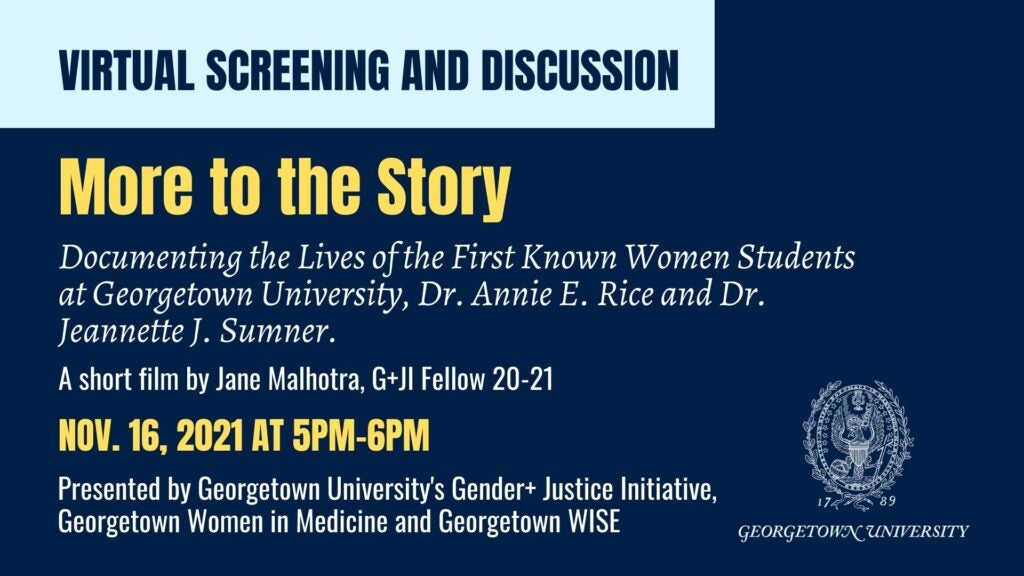Jane Varner Malhotra (she/her) is the director of medical advancement communications in the Office of Advancement, and editor of Georgetown Health magazine. She earned her AB in Russian Language and Visual Arts from Dartmouth College. Her career in storytelling, education and the arts includes work with the National Gallery of Art, University of Michigan, and the State Department. She is dedicated to civic engagement and community building, co-founding an award-winning nonprofit for exploring civics in action with kids, and helping launch the Tenleytown Main Street program in Washington, DC’s second oldest village. In 2019 she co-founded Washington Home Inclusive Monthly Mass (WHIMM), organizing house liturgies led by local Roman Catholic Women Priests, to make visible the active ministry and call of women.

Short Documentary:
Watch Jane Varner Malhotra’s Film More to the Story : The First Two Known Women Students at Georgetown UniversityWatch

Screening and Discussion:
Watch Documenting the Lives of the First Known Women Students at Georgetown, Dr. Annie E. Rice and Dr. Jeannette J. Sumner
Research Project: More to the Story: Dr. Annie E. Rice and Dr. Jeannette J. Sumner, Georgetown’s First Known Women Students
I’ve researched the stories of the first known women to study at Georgetown, because many people connected with the university are unfamiliar with these two trailblazing doctors. Their goal to establish a clinic for women by women doctors was ambitious, and aligned with Georgetown’s mission to expand the greater good and care for the most vulnerable. Their path was challenging, and their names should be more familiar to us for the impact they made both in medicine and in higher education.
Main Research Question(s)
What more can we find out about the first two women to study at Georgetown?
Research Methodology
I read several historic books, newspaper and journal articles, communicated with librarians and historians, and researched online databases to piece together a sketch of their lives. I visited their gravesites and the places where they lived. worked, and died to film them for the documentary.
Significant or Surprising Findings
In addition to the items mentioned above, I also located the patient record for Jeannette Sumner at the National Archives, with help of an archivist on staff there. She said it’s over 100 pages of letters from friends and family, in addition to medical notes. While researchers are still not allowed to go inside the building, the archivist sent me a few photos of some of the pages–enough to further kindle my curiosity about why she was admitted, who brought her there, and why she stayed. More to uncover…
Summary of Findings or Progress:
I found an original document signed by Dr. Sumner and Dr. Rice in Georgetown’s School of Medicine archive, a letter requesting a donation of medical equipment to help them open their free clinic. I received copies of the covers of their theses for medical school at the Woman’s Medical College of Pennsylvania, which is now part of Drexel. The librarian there was extremely helpful, despite limited capacity due to the pandemic.
The documentary was completed with the help of a Georgetown undergraduate, Carlos Rosario, who shot some of the footage and did the first draft of the edit. In June, I presented a draft of the documentary for a group of summer students enrolled in a course on Medicine, Gender and Race with Professor Theordora Danylevich. It was well received, and I encouraged the students to continue exploring these stories during their time at Georgetown.